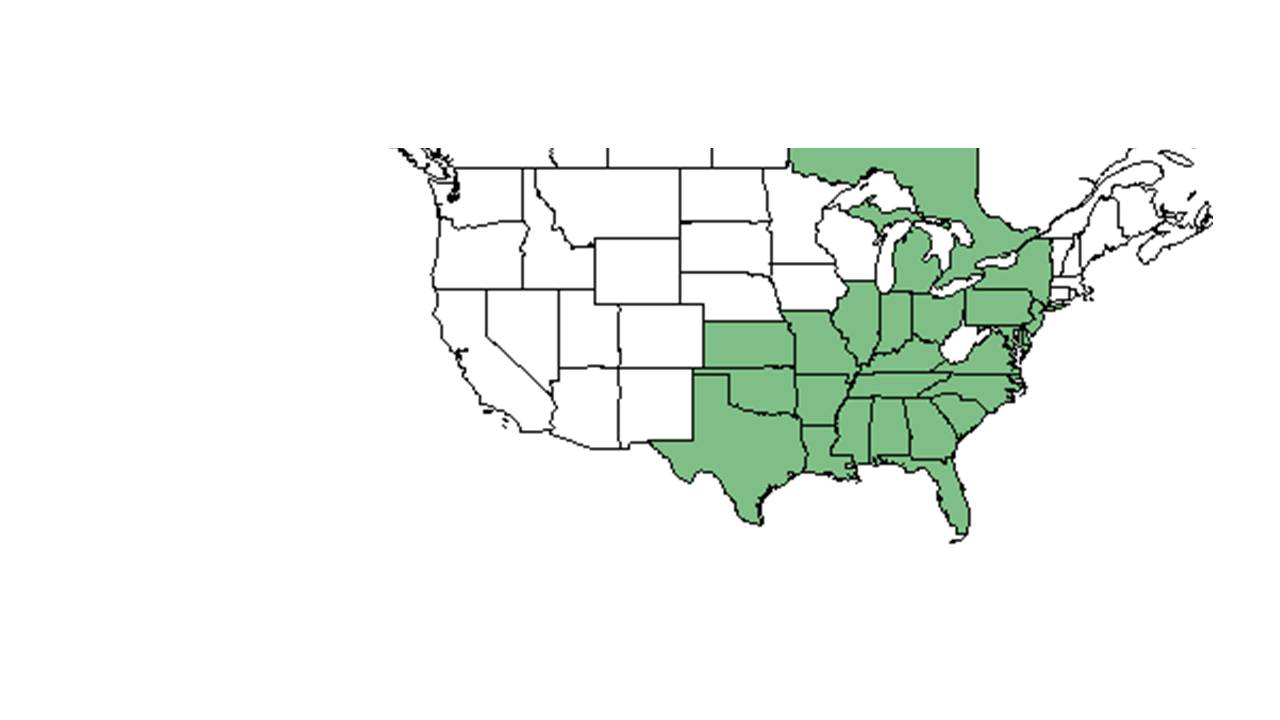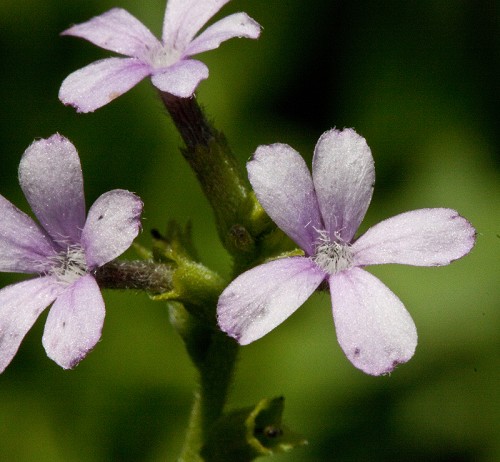Difference between revisions of "Buchnera floridana"
(→Conservation and management) |
(→Conservation and management) |
||
| Line 49: | Line 49: | ||
==Conservation and management== | ==Conservation and management== | ||
| − | |||
==Cultivation and restoration== | ==Cultivation and restoration== | ||
Revision as of 20:32, 27 March 2019
| Buchnera floridana | |
|---|---|

| |
| Photo by John R. Gwaltney, Southeastern Flora.com | |
| Scientific classification | |
| Kingdom: | Plantae |
| Division: | Magnoliophyta - Flowering plants |
| Class: | Magnoliopsida - Dicotyledons |
| Order: | Scrophulariales |
| Family: | Scrophulariaceae |
| Genus: | Buchnera |
| Species: | B. floridana |
| Binomial name | |
| Buchnera floridana L. | |

| |
| Natural range of Buchnera floridana from USDA NRCS Plants Database. | |
Common names: Florida Bluehearts; Savanna Bluehearts
Contents
Taxonomic notes
Synonyms: Buchnera americana Linnaeus; B. longifolia Swartz (by misattribution); B. breviflora Pennell (by misattribution); B. elongata Swartz
Varieties: none
Description
For the genus Buchnera, is hispid to pilose perennials with erect, simple stems growing up to 4-8 dm tall. The entire plant turns black when dried. The leaves are opposite, elliptic to ovate-lanceolate in shape, grows up to 3-7 cm long, 5-15 mm wide, and is reduced above. The leaves are entire or irregularly serrate or crenulate, sessile. The inflorescence is an open spike, the flower are in the axils of opposite bracts and subtended by 2 bractlets. The calyx tube is cylindrical, grows up to 3.5-5 mm long, the lobes 5, lanceolate in shape, slightly unequal, up to 1 mm or less long. The corolla is purple or white in color, subsalverform, weakly zygomorphic, lobes 5, shorter than the calyx tube. Up to 4 fertile stamens are present with anthers with only a single sac. The capsule is ovoid or pyriform, grows up to 5-6 mm long and is loculicidal in shape.[1]
Specifically, for Buchnera floridana, the leaves are not 3-veined or not as conspicuous are B. americana. The leaves are lanceolate to elliptic in shape. The corolla tube grows up to 8-10 mm long and the lobes grow up to 4-5 mm long. Flowers from April to October.[1]
Distribution
Mostly restricted to the coastal plain.[2]
Ecology
It is a host plant of Brevipalpus phoenicis, which vectors viral diseases like citrus leprosis.[3]
Habitat
Habitats include low lying swamp and sandy acidic pine and palm barrens.[4] This species has been observed in Everglades National Park.[5]
Phenology
B. floridana flowers and fruits all year.[5] Flowers are blue-violet or white and bisexual with a superior ovary.
Fire ecology
Thrives in fire-maintained pine graminoid ecosystems in strongly acidic soils.[2]
Conservation and management
Cultivation and restoration
Photo Gallery
Flowers of Buchnera floridana Photo by John R. Gwaltney, Southeastern Flora.com
Plant of Buchnera floridana Photo by John R. Gwaltney, Southeastern Flora.com
References and notes
- ↑ 1.0 1.1 Radford, Albert E., Harry E. Ahles, and C. Ritchie Bell. Manual of the Vascular Flora of the Carolinas. 1964, 1968. The University of North Carolina Press. 954-5. Print.
- ↑ 2.0 2.1 [[1]]Accessed: April 4, 2016
- ↑ Childers, C. C., J. C. V. Rodrigues, et al. (2003). "Host plants of Brevipalpus californicus, B. obovatus, and B. phoenicis (Acari: Tenuipalpidae) and their potential involvement in the spread of viral diseases vectored by these mites." Experimental & Applied Acarology 30: 29-105.
- ↑ [[2]]
- ↑ 5.0 5.1 Florida State University Robert K. Godfrey Herbarium database. URL: http://herbarium.bio.fsu.edu. Last accessed: June 2014. Collectors: V. I. Sullivan and J. Wooten. States and Counties: Florida: Monroe. Cite error: Invalid
<ref>tag; name "fsu" defined multiple times with different content

